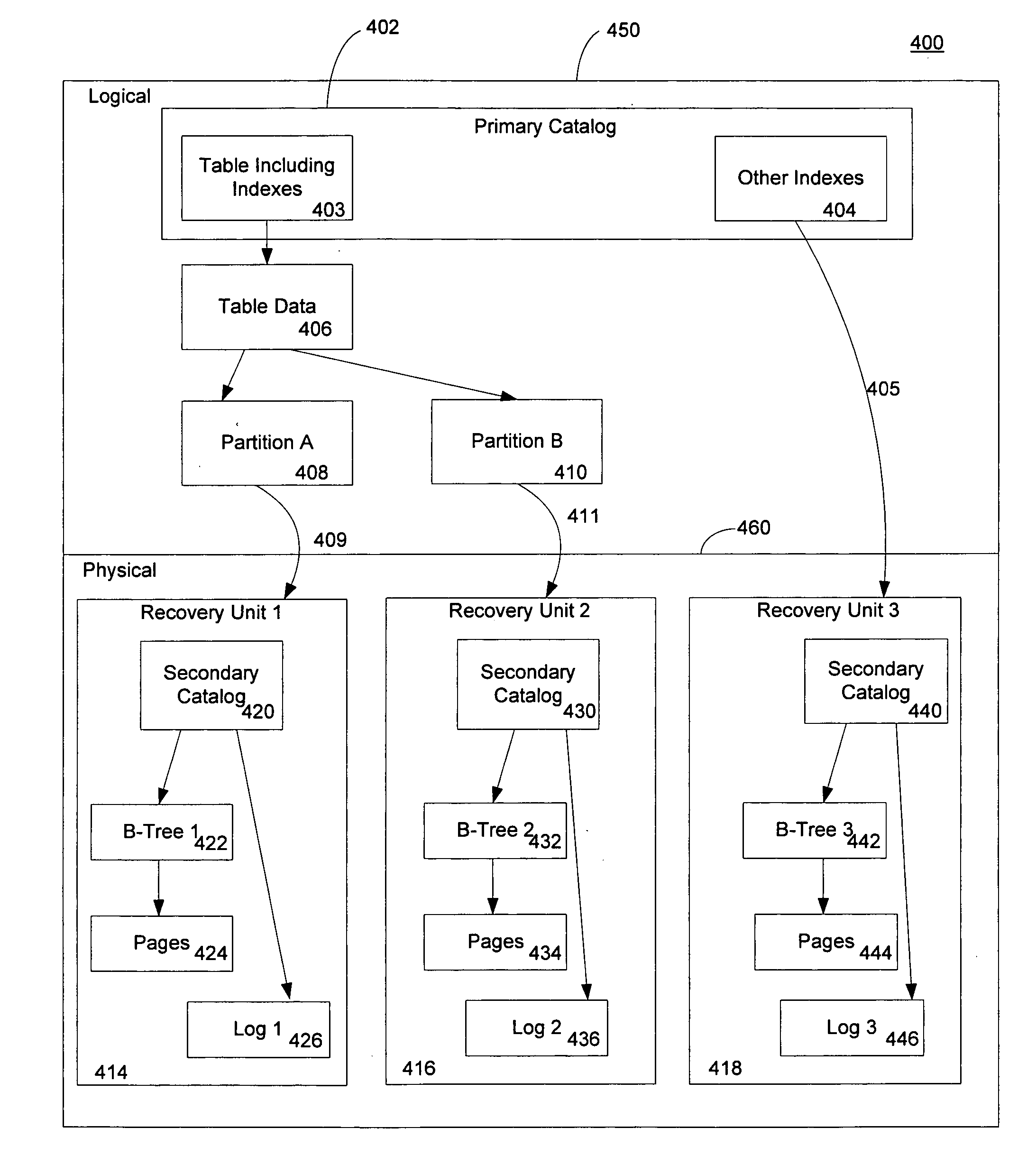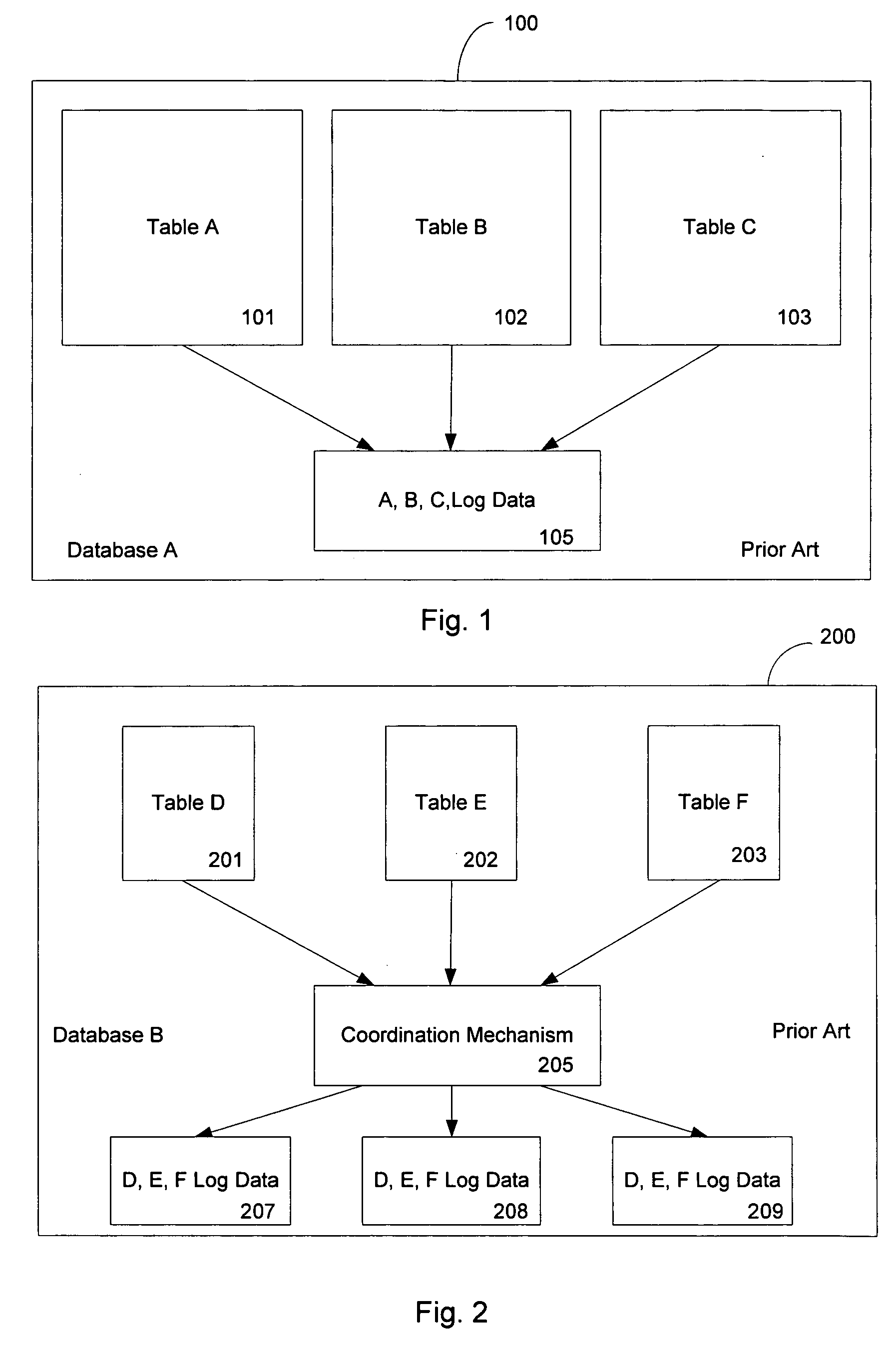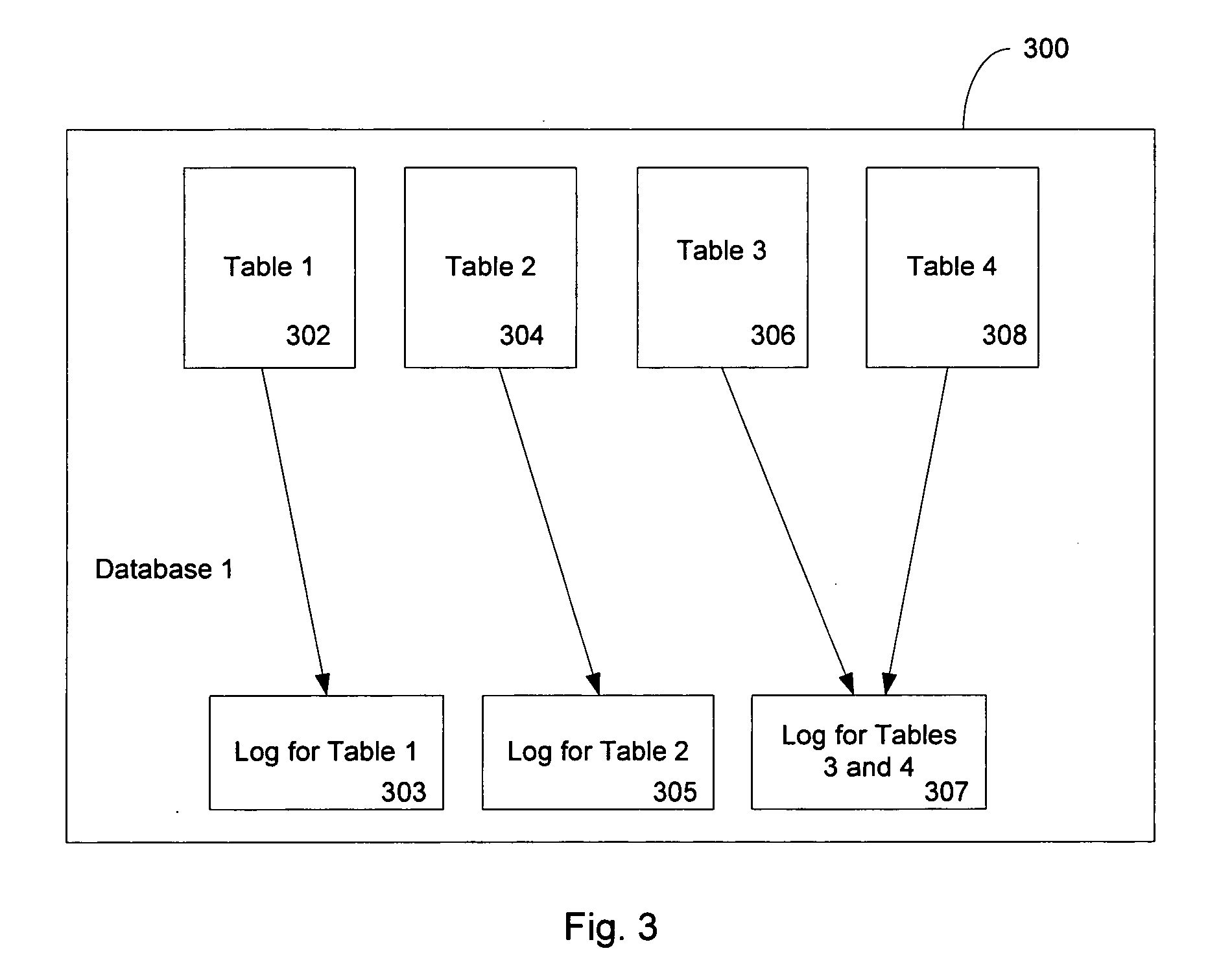System and method for recovery units in databases
a database and recovery unit technology, applied in the field of computer databases, can solve the problems of database inaccessibility, database limit push, database bottleneck by limit,
- Summary
- Abstract
- Description
- Claims
- Application Information
AI Technical Summary
Benefits of technology
Problems solved by technology
Method used
Image
Examples
Embodiment Construction
Overview
[0017] An embodiment of the invention provides for multiple recovery units in a database that allows for addressing the bottleneck problems of the prior art and additionally provides the capability to increase overall database availability. This may be accomplished by having only parts of the database be unavailable during maintenance or disaster recovery scenarios. One aspect of invention provides for separation of metadata between logical elements of the database and physical elements. The logical elements include the database, tables, indexes, partitions of tables and indexes, data types, constraints, stored procedures, triggers, and filegroups that the user sees. The physical elements include the pages, files, B-trees, heaps, recovery units, and log which are invisible to the end user. Metadata representing the logical elements of the database are stored in a “primary” recovery unit, while the metadata for the physical elements of a database are stored in their own res...
PUM
 Login to View More
Login to View More Abstract
Description
Claims
Application Information
 Login to View More
Login to View More - R&D
- Intellectual Property
- Life Sciences
- Materials
- Tech Scout
- Unparalleled Data Quality
- Higher Quality Content
- 60% Fewer Hallucinations
Browse by: Latest US Patents, China's latest patents, Technical Efficacy Thesaurus, Application Domain, Technology Topic, Popular Technical Reports.
© 2025 PatSnap. All rights reserved.Legal|Privacy policy|Modern Slavery Act Transparency Statement|Sitemap|About US| Contact US: help@patsnap.com



